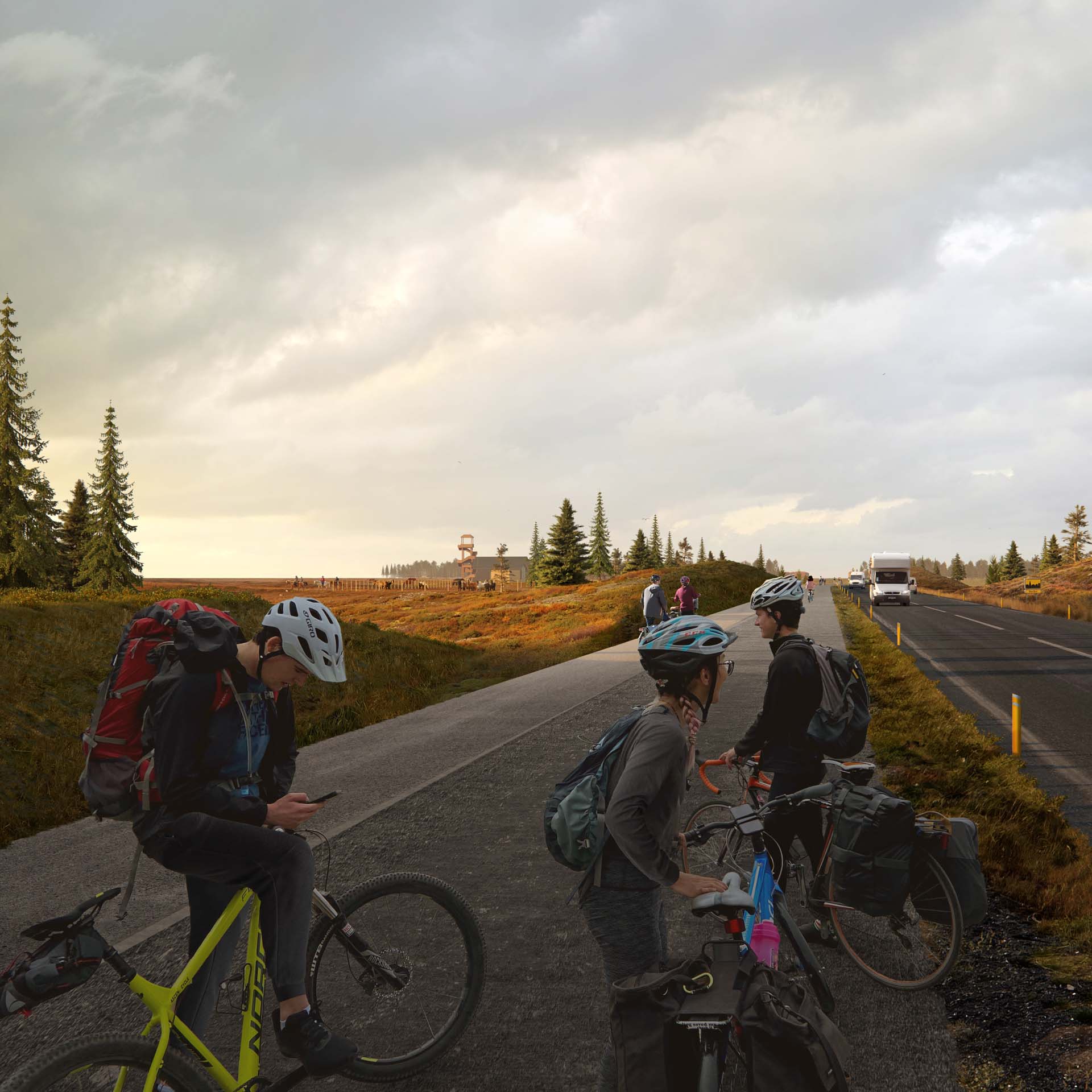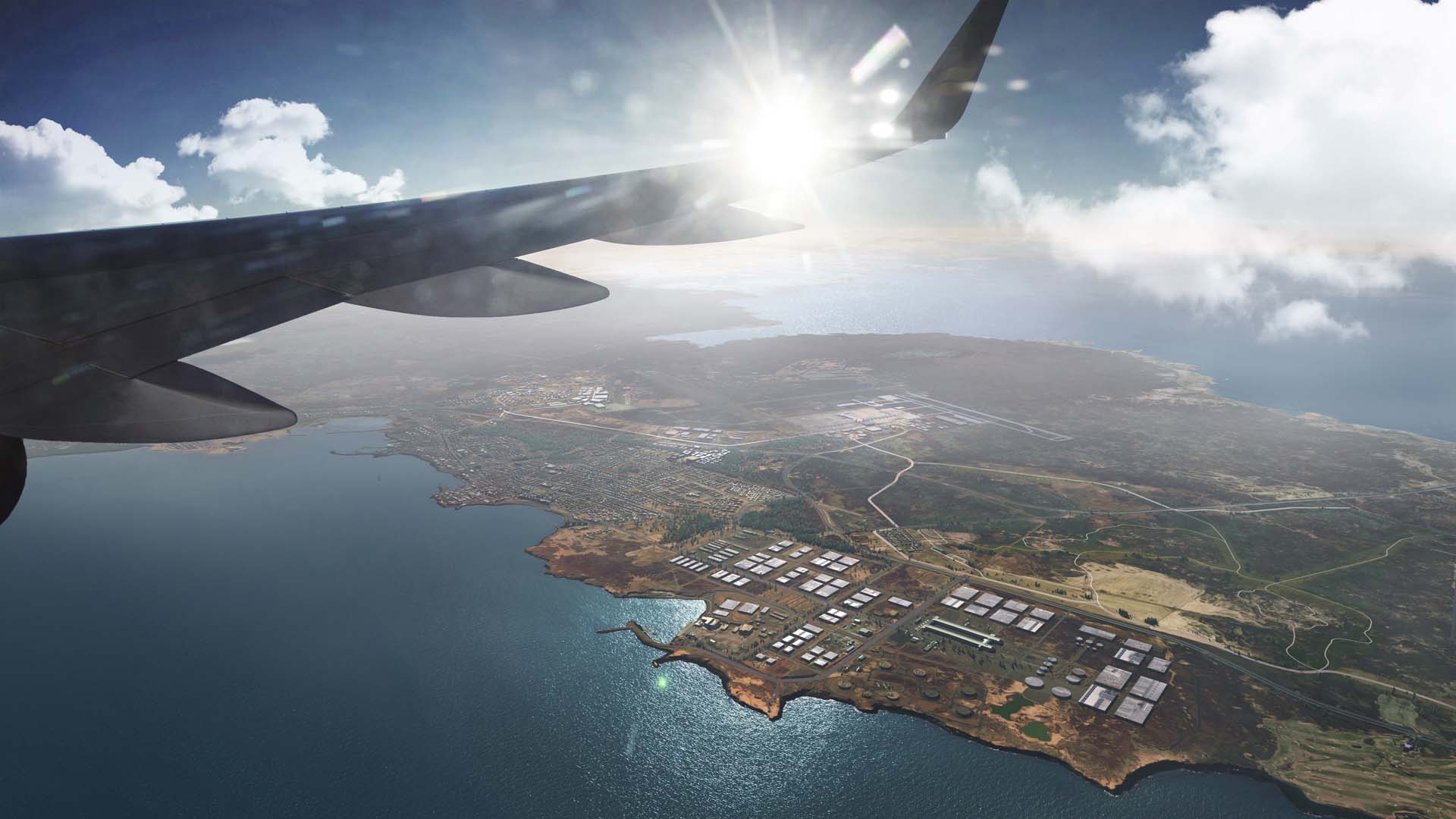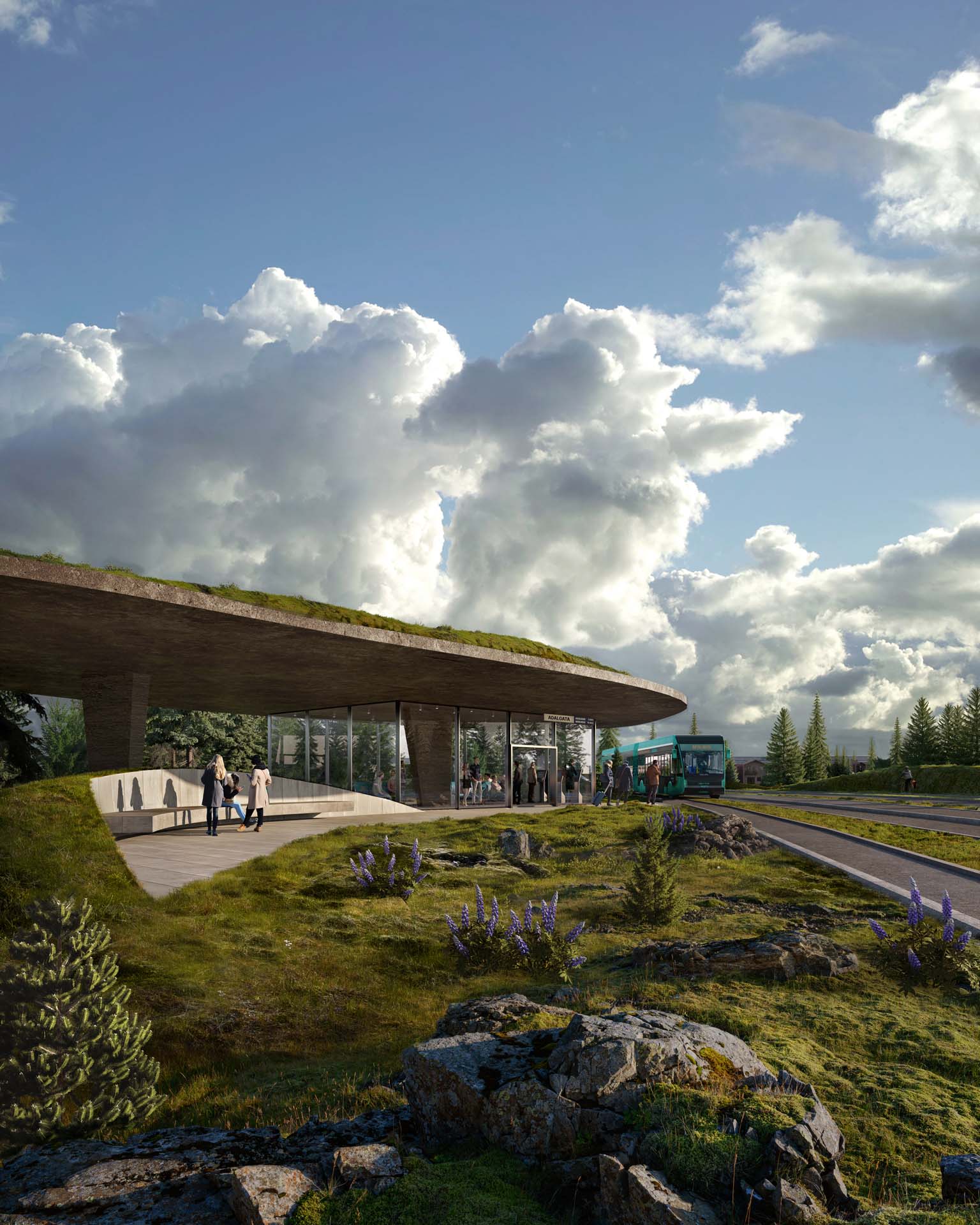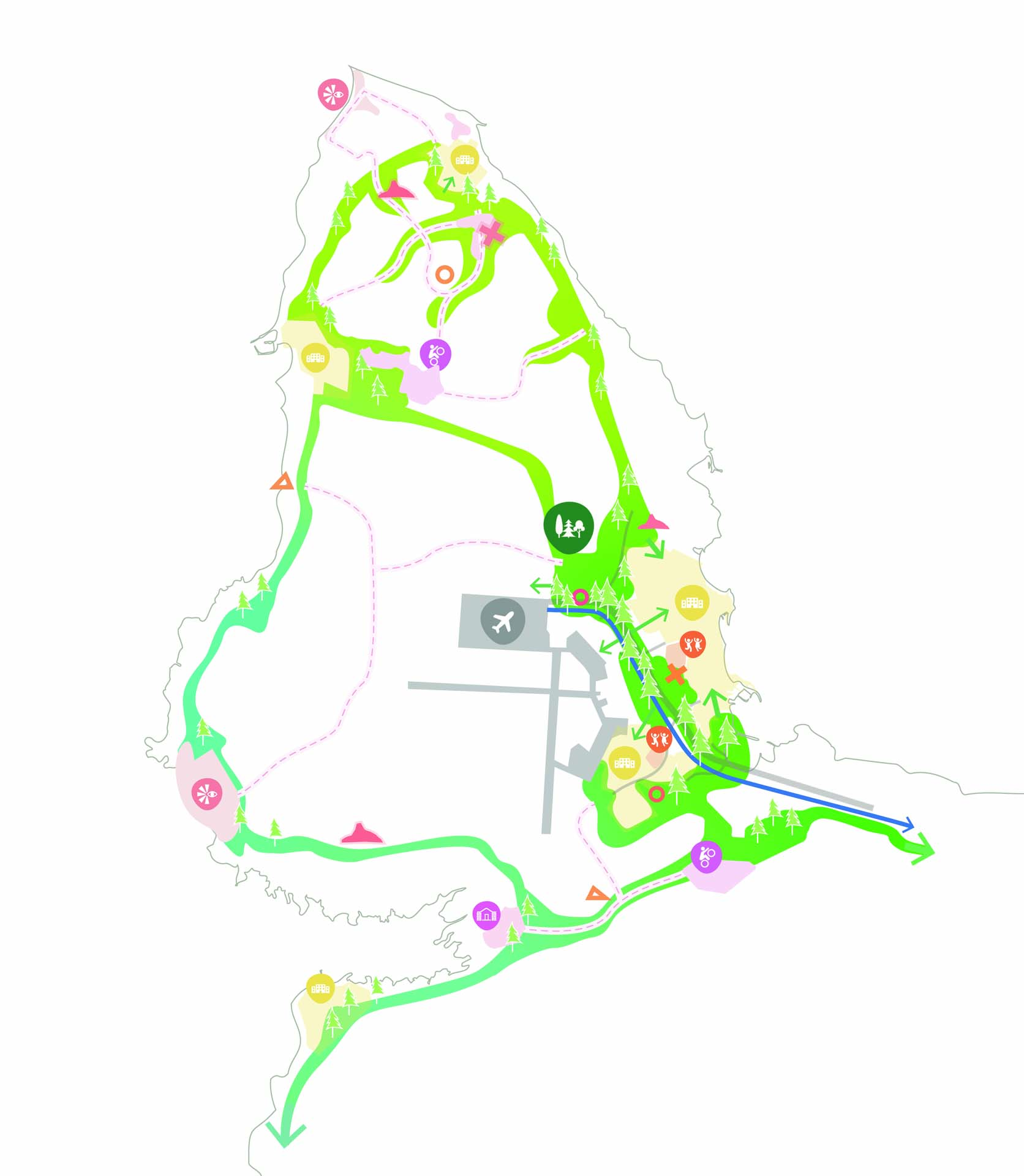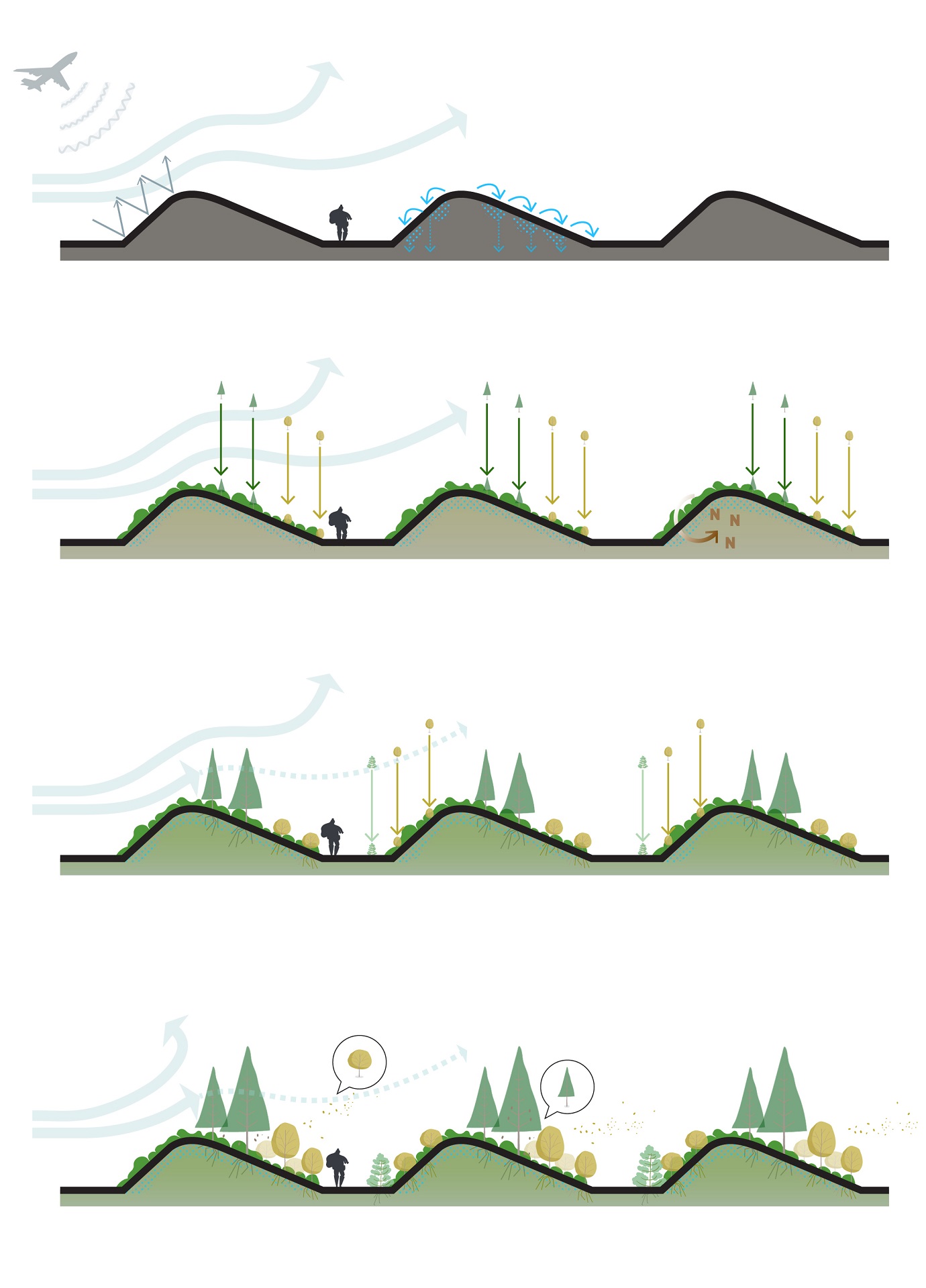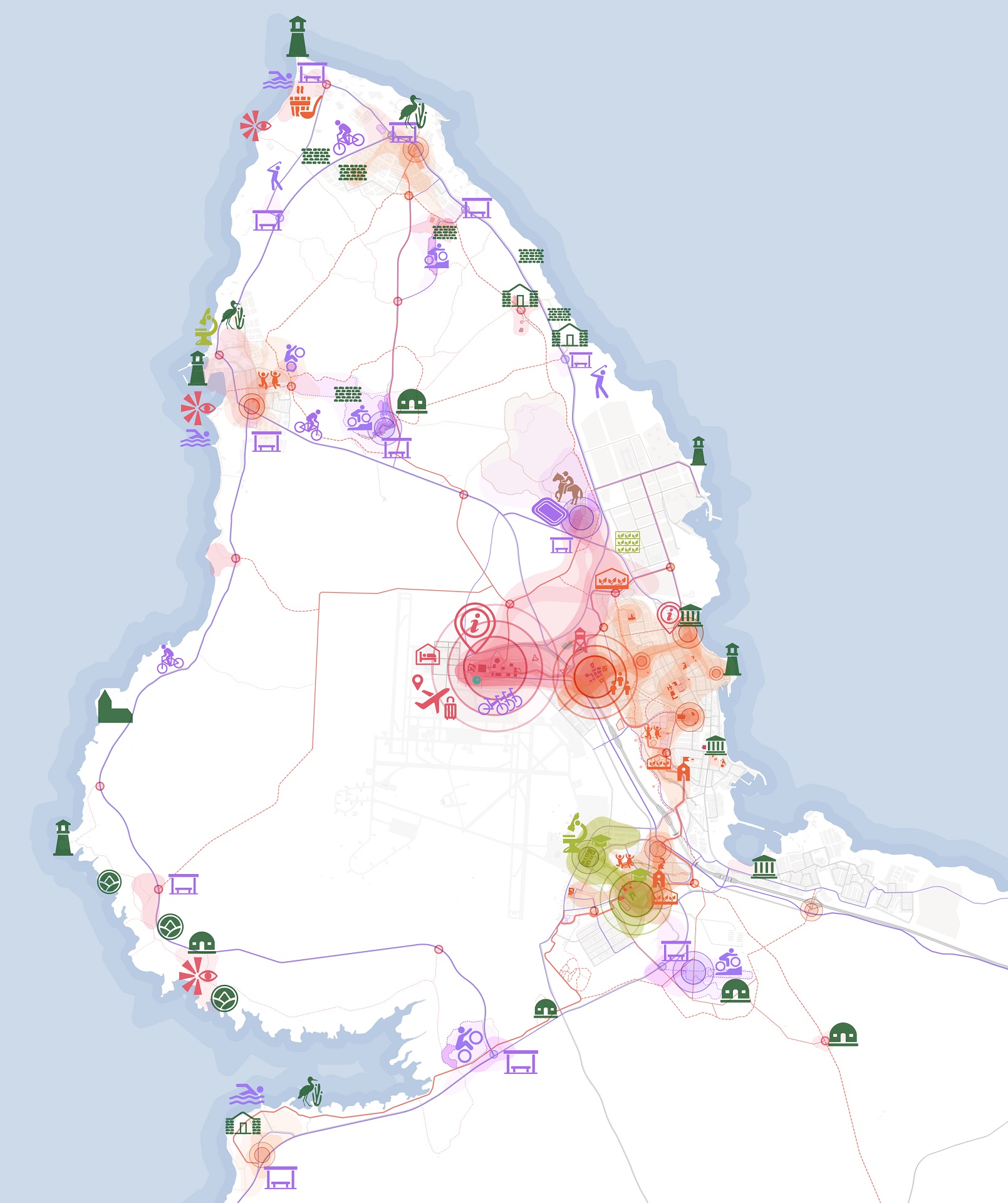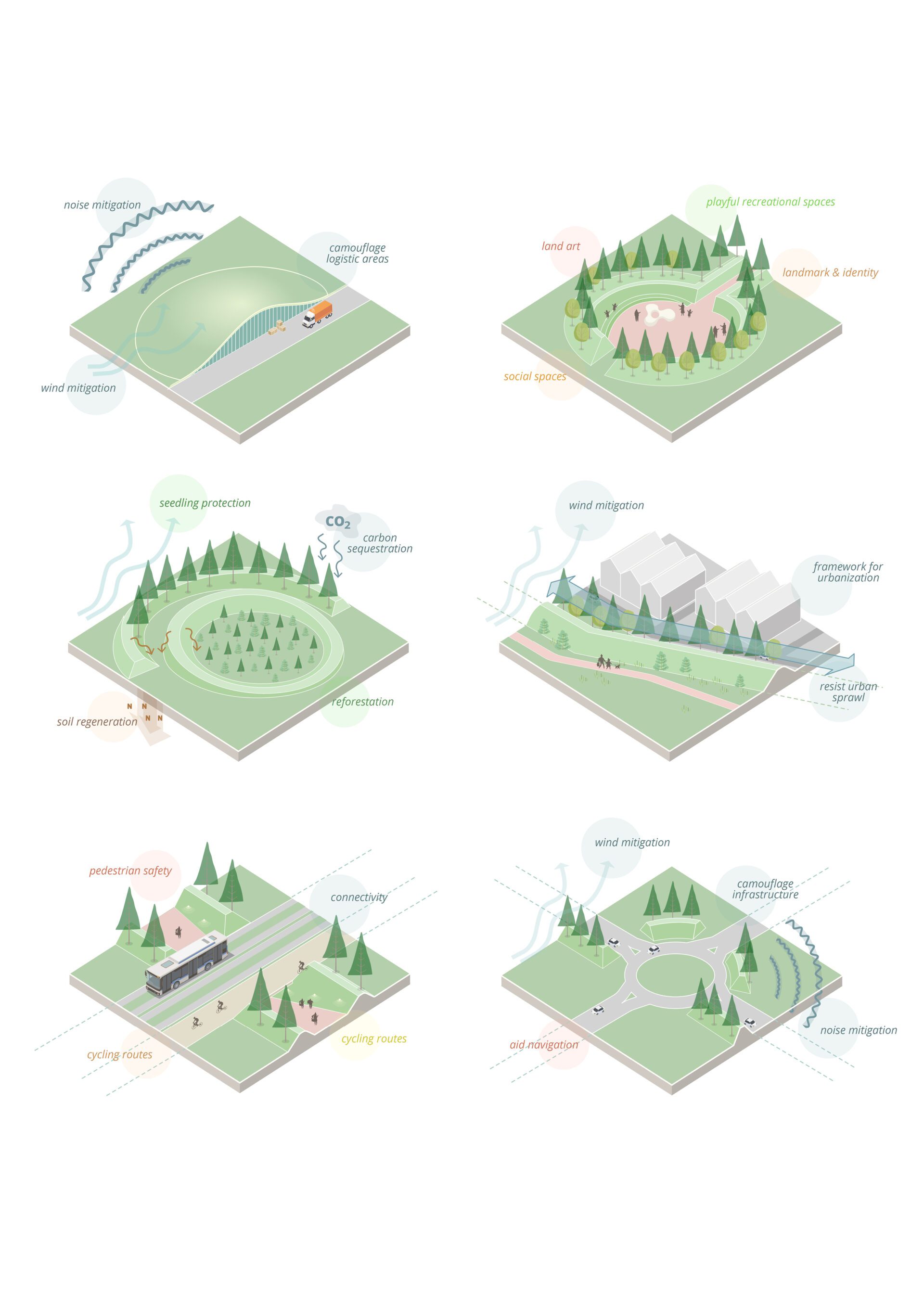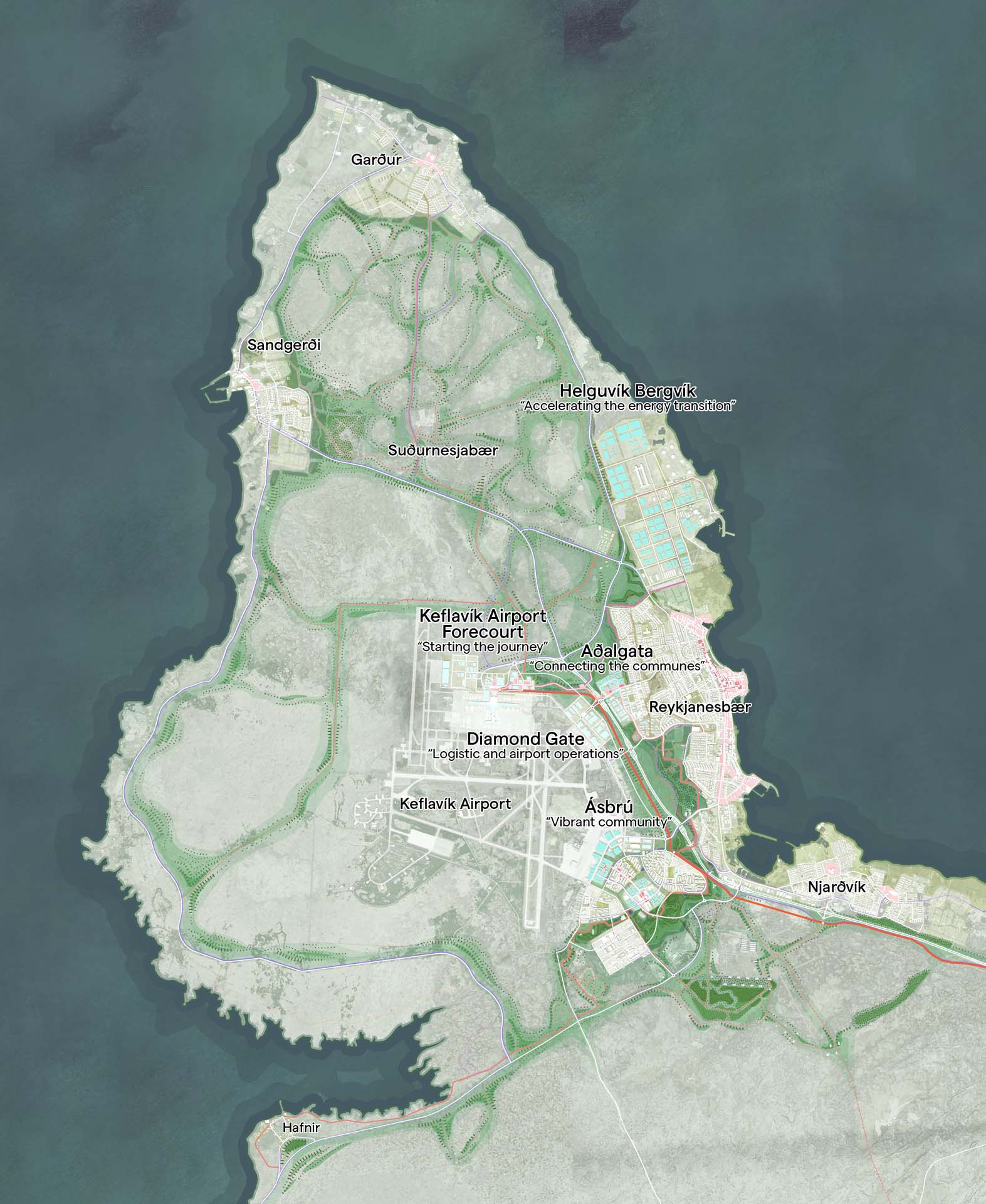K64 Keflavík Airport Area Masterplan
Felixx Landscape Architects and Planners
Short description
Keflavík International Airport is Iceland’s most emblematic gateway. Sitting at the crossroads of Europe and North America, home to the Reykjanes UNESCO Global Geopark, the airport area is exceptionally well suited to become one of the leading developments for sustainable innovation in the aviation, energy and technology sectors. K64 Keflavík Airport Area Masterplan supports Iceland’s net-zero and sustainability ambitions as well as exemplify United Nations (UN) Sustainable Development Goals (SDG). The design concepts promote health and well-being, appropriate densities, landscaping, and transportation, to create a sustainable city region of the future.
The masterplan has been developed by a multidisciplinary team led by KCAP, including FELIXX, WSP, MIC-HUB, VSO Consulting, Buck Consultants International, Buro Happold, Base Design, Maurits Schaafsma, and Kanon Arkitektar.
Iceland is known for its vast open landscapes shaped by massive volcanos and expansive glaciers. Native birchwoods are also an important part of the landscape. They offer food and shelter for biodiversity, help stabilise soil, provide wind breaks, and sequester carbon. At one point, it is thought that 25-40% of Iceland was covered in birchwoods. Now, it is around 1.9% (https://www.government.is/topics/environment-climate-and-nature-protection/forestry/). Tapping into the government’s climate action plan that identifies reforestation as a top priority, the landscape concept within the masterplan connects the Airport Corridor into a national network of reforestation projects. Afforestation is recognized as a key strategy to address the increased impact of wind erosion and a crucial instrument to meet the Icelandic climate goals. Reforestation and afforestation programs are building on the involvement of local communities, ensuring long-term climate sustainability while enhancing social networks.
PENINSULA PARK
The landscape strategy takes the concept of afforestation as its basic premise to mitigate the harsh climate and create comfortable conditions that allow for shared programs, outdoor facilities and cycling networks. The vast landscape that currently separates the existing communities and new development clusters will grow into a uniting park. Organized as a network of nodes and linear elements, the proposed landscape will tie the entire peninsular together into a coherent whole referred to as the Peninsula Park. The park will bring back the original nature of the peninsula reintroducing trees as a strong part of its identity. It will connect communities, mitigate wind through landforms and reforestation. Cleaner air, less wind, new opportunities for sports, recreation and learning will improve the liveability of the area for all generations, strengthen the culture of active outdoor use. The landscape strategy for the Peninsula Park uses afforestation as a means to mitigate the climate, meanwhile creating a shared identity that refers back to the historical landscape of Suðurnes.
LANDSCAPE FRAMEWORK
Every individual development contributes to the realization of the new Peninsula park, but the backbone of the Peninsula Park is formed by networks for walking, hiking, biking and horse-riding. They enhance and connect existing trails and circuits, strengthening the physical relation between different communities and the airport. The peninsula contains unique natural and man-made landmark ‘nodes’ - points of interest for locals and visitors. New nodes will increase traffic and improve the overall quality of the outdoor experience, adding up to a system of social facilities and embed existing public amenities. Inspired by the traditional Icelandic turf house, landforms become a natural part of the landscape and make afforestation possible. The land is sculpted with small hills and ribs, a series of landforms, berms and larger forest patches, to create protected zones against the wind. On these zones, trees can be planted and sown, allowing them to gradually turn into forests. The creation of this new sculpted landscape is linked to all new developments on the peninsula and functions as a social catalyst for the existing communities to improve their amenities. Mitigation landforms protect bike paths and walking trails from the winds, create public spaces inside urban, shelter public transport hubs.
In the K64 Masterplan, urban design, landscape and mobility strategies intertwine in an ecosystem that connects, protects, and enhances while supporting activity and population and employment growth.
Landscape Architecture Design Team and Master Planning Team:
KCAP, Felixx Landscape Architects and Planners, WSP, MIC-HUB, VSO Consulting, Buck Consultants International, Buro Happold, Base Design, Maurits Schaafsma, Kanon Arkitektar, Plomp
Entry details
